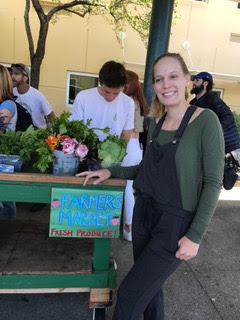This week in Sustag we had our last farmers market of the year. The Sustag market is a very important part of the class because it helps students understand the whole agriculture system and its supply chain. It allows students to actually sell the products they grew, and through this action see how produce is taken from the farm to the consumer. It is easy to see the food you buy and not think twice how it got to your table. However, the Sustag farmers market allows students to see how the food is planted, grown, harvested, and sold. It teaches the supply chain at each level, with the final level being sales at the farmers market. This hands-on take to learning the supply chain allows students to have a better knowledge of how much time and labor goes into the food on their plate. Another part of the farmers market that is important is selling the product. Through the sales of produce, students learn what to make with different vegetables, if a customer asks. This knowledge will allow students to know what recipes are best for certain crops as opposed to other crops. With the knowledge of the supply chain and how to cook different crops students are able to fully understand commercial agriculture and how their food gets from farm to table.
By Maggie Robison





